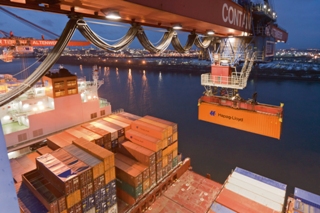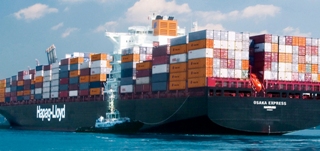 German ocean carrier Hapag-Lloyd recorded a net loss of US$38 million in 2011 after registering a $565 million profit the previous year.
German ocean carrier Hapag-Lloyd recorded a net loss of US$38 million in 2011 after registering a $565 million profit the previous year.
“2011 was a challenging year for liner shipping. After a year of record profits in 2010, business proved more difficult than expected last year, first and foremost due to the sharp increases in oil prices as well as factors specific to the industry, and languished in comparison to our original expectations,” said Michael Behrendt, Hapag-Lloyd CEO.
Higher average bunker prices “severely depressed” earnings, said the world’s fourth largest container line in its March 21 annual report, adding that the extra expense could not be passed on “as some market players resorted to aggressive pricing in 2011 in order to gain market share.”
Despite these negative developments, EBITDA for 2011 reached $484 million. The operating result (adjusted EBIT) came to $133 million.
“In comparison with the competition this was an excellent result for Hapag-Lloyd in a challenging year. Not only were we the only large liner shipping company to achieve a positive operating result in all four quarters of 2011, but we were also the only market participant to close the second half-year with a group profit after interest and taxes,” said Behrendt.
Cargo volumes increased by 5.1 percent to 5.2 million 20-foot equivalent units (TEUs). Average freight rate was “virtually unchanged” from the previous year at $1,532 per TEU in 2011.
Sales fell to $8 billion last year compared to $8.2 billion in 2010, mainly arising from exchange rate fluctuations.
For 2012, Hamburg-based Hapag-Lloyd said high energy costs will remain a big concern for the whole industry. The difficult environment made it necessary to implement a sharp increase in freight rates beginning in March and April, which it said the market has accepted.
“These increases are unavoidable in order to get back to adequate and sustainable rates again, especially as the bunker price has gone up even further,” said Behrendt. “This is also in the interest of our customers, because in the long run it is the only way shipping companies can offer a comprehensive, dependable service, which given the global division of labor many customers rely on.”
Photo: Hapag-Lloyd





